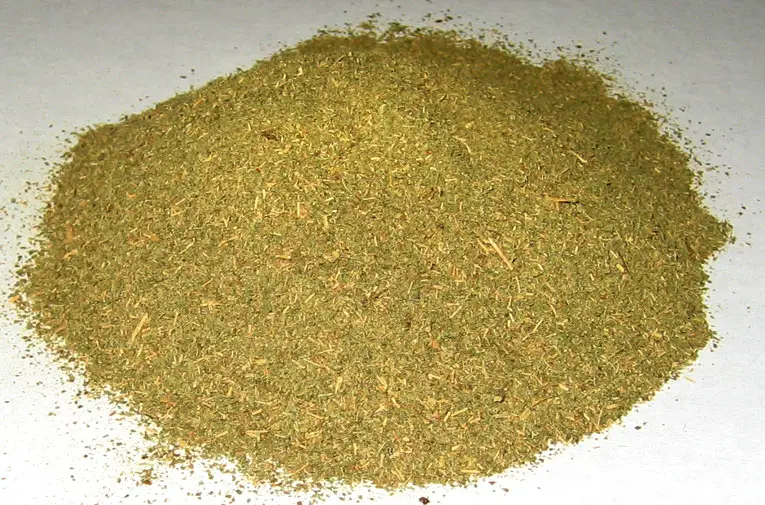Kratom is a plant that has been used for centuries in Southeast Asia for its medicinal properties. Recently, it has gained popularity in the Western world as a natural alternative to pharmaceuticals for pain relief, anxiety, and depression. However, even with kratom benefits, this newfound popularity comes increased scrutiny and controversy. This Kratom briefing provides you with some basic information you need to know about this plant, including Kratom’s benefits, risks, and proper dosage. Whether you’re a seasoned kratom user or just curious about its potential benefits, this handbook will equip you with the knowledge to make informed decisions about using kratom safely and effectively.
Featured Image – Thehealingeast, CC BY-SA 4.0, via Wikimedia Commons
Table of Contents
What is Kratom, and how is it consumed?
Kratom leaves can be chewed, brewed into tea, or consumed in capsules. The effects of kratom vary depending on the strain and dosage. Kratom leaves contain several alkaloids, with the most abundant being mitragynine. Mitragynine activates the mu-opioid receptor, which produces pain relief, sedation, and euphoria. Kratom also activates the kappa-opioid receptor, which produces anti-depressant effects and can reduce anxiety.
Kratom is available in several forms, including crushed leaves, powder, and capsules. The most common method of consumption is by brewing the leaves or powder into a tea. Kratom tea can be made by boiling the leaves or powder in water for several minutes. The tea can be sweetened with honey or sugar to improve the taste. Kratom capsules are also available, which make it easier to consume kratom without the bitter taste.
Benefits of Kratom

Kratom has several potential benefits for those seeking a natural alternative to pharmaceuticals. The most notable benefits of kratom include pain relief, anxiety relief, and mood enhancement. Kratom is effective in treating chronic pain, neuropathic pain, and osteoarthritis. It can also reduce anxiety and depression symptoms and improve mood.
Kratom can also boost energy and productivity levels, making it popular among those who need to stay focused for long periods. It can improve cognitive performance, concentration, and memory retention. Kratom has also been used to treat opiate addiction, as it can reduce withdrawal symptoms and cravings.
Risks of Kratom Consumption

While kratom has several potential benefits, it also carries several risks. Kratom can cause nausea, vomiting, and constipation, especially at higher doses. It can also cause dizziness, sweating, and tremors. Long-term kratom use can lead to liver damage, kidney damage, and respiratory depression.
Kratom can also interact with other medications and supplements, especially those that affect the cardiovascular system. Kratom can cause an increase or decrease in blood pressure and heart rate, which can be dangerous for those with pre-existing conditions. Kratom can also interact with antidepressants, anti-anxiety medications, and painkillers.
Common Kratom Strains and their effects
Kratom is available in several strains, each with its unique effects. The most popular strains of kratom include:
- Red vein kratom – produces pain relief, sedation, and relaxation.
- Green vein kratom – produces energy, focus, and mood enhancement.
- White vein kratom – produces stimulation, euphoria, and cognitive enhancement.
Kratom strains can vary in potency and effects depending on the region they are grown in and the time of harvest. Some strains may also be blended to produce a more balanced effect.
Kratom dosage guidelines

Kratom dosage guidelines vary depending on the strain and method of consumption. Kratom is typically consumed in doses of 1-5 grams, with higher doses producing stronger effects. However, it is important to start with a small dose and gradually increase as needed.
Kratom dosage can also vary depending on the individual’s weight, tolerance, and sensitivity to the alkaloids. It is recommended to start with a low dose of 1-2 grams and gradually increase by 0.5 grams until the desired effects are achieved. It is essential to follow the recommended dosage guidelines to avoid adverse effects.
Kratom Legality and Regulation
Kratom’s legality and regulation vary across the world. Kratom is legal in most countries, including the United States, but is banned in several states and cities. The U.S. Food and Drug Administration (FDA) does not regulate kratom, which is considered a dietary supplement. However, the FDA has issued several warnings about the potential risks of kratom consumption, including liver damage, respiratory depression, and addiction.
Kratom addiction and withdrawal
Kratom can be addictive, especially with long-term use or high doses. Kratom addiction can lead to physical dependence, withdrawal symptoms, and tolerance. Kratom withdrawal symptoms can include nausea, vomiting, diarrhea, insomnia, anxiety, and depression.
To avoid kratom addiction, it is essential to follow the recommended dosage guidelines and avoid using kratom for extended periods. Those who experience withdrawal symptoms should seek medical attention and support.
Kratom and mental health

Mitragyna Speciosa tree – ThorPorre, CC BY 3.0, via Wikimedia Commons
Kratom has been shown to have potential benefits for mental health conditions such as anxiety and depression. Kratom can reduce anxiety symptoms and improve mood. However, kratom can also worsen symptoms of mental health conditions, especially with high doses or long-term use.
Those with pre-existing mental health conditions should consult with their healthcare provider before using kratom. Kratom should not be used as a substitute for professional mental health treatment.
Kratom sourcing and quality control
Kratom sourcing and quality control are essential to ensure the safety and effectiveness of kratom products. Kratom should be sourced from reputable vendors who provide third-party lab testing results and follow good manufacturing practices.
Kratom products should be free from contaminants, such as heavy metals, pesticides, and bacteria. Kratom products should also be accurately labeled, with the strain and dosage clearly indicated.
Kratom Benefits and Risks – Is It Right for You?
Kratom has several potential benefits for those seeking a natural alternative to pharmaceuticals. It can provide pain relief, anxiety relief, and mood enhancement. However, kratom also carries several risks, including addiction, withdrawal, and adverse effects.
Before using kratom, it is essential to consult with a healthcare provider and follow the recommended dosage guidelines. Kratom should not be used as a substitute for professional medical treatment.
Kratom sourcing and quality control are also essential to ensure the safety and effectiveness of kratom products. It is important to source kratom from reputable vendors who provide third-party lab testing results and follow good manufacturing practices.
In conclusion, kratom can be a beneficial natural alternative for those seeking pain relief, anxiety relief, and mood enhancement. However, using kratom responsibly and following the recommended dosage guidelines is essential to avoid adverse effects.




